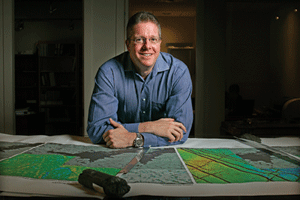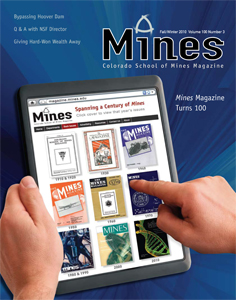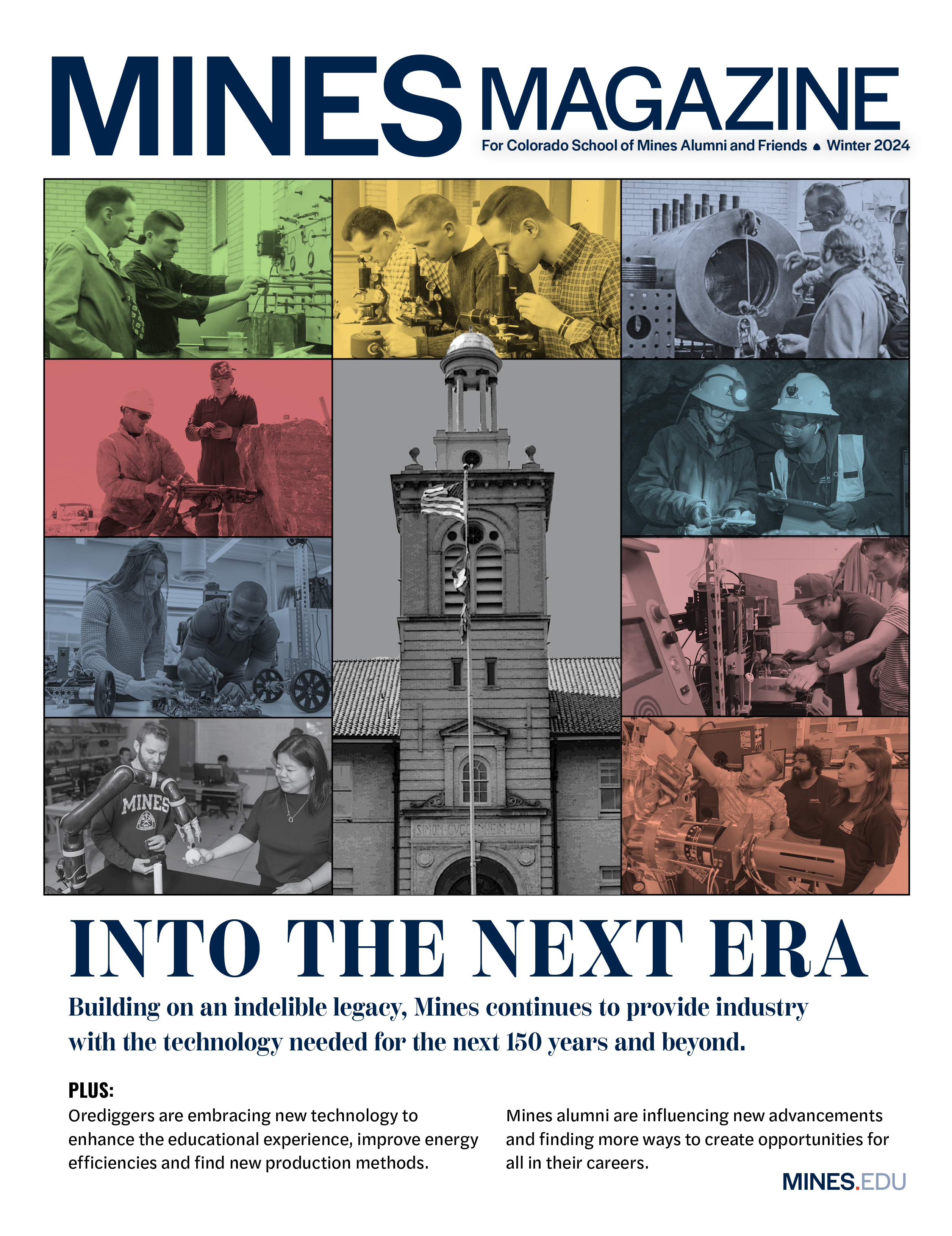 As he prepared to graduate from a private prep school in the tiny suburb of Milton, Mass. in 1982, Eric Friedland ’86 was well aware of what was expected of its graduates: Ivy League colleges; careers in law, medicine or the like; and settling down somewhere in or close to New England. But Friedland had other plans.
As he prepared to graduate from a private prep school in the tiny suburb of Milton, Mass. in 1982, Eric Friedland ’86 was well aware of what was expected of its graduates: Ivy League colleges; careers in law, medicine or the like; and settling down somewhere in or close to New England. But Friedland had other plans.
He’d known he wanted a career in geologic exploration since age 17. “They were all going to Harvard or Yale, and no one knew what the School of Mines was all about. But I had the bug. I knew what I wanted.” Three decades later, a string of ventures behind him (some successful, some not), as well as a mining tragedy that prompted a two-year hiatus from exploration, Friedland’s unconventional career choice is poised to pay off big, as his Vancouver-based Peregrine Diamonds Ltd. works to uncover what could be the most important diamond discovery in decades.
In just two years of exploration at its Chidliak site on Canada’s frigid south Baffin Island (a desolate chunk of rock and ice straddling the Arctic Circle), the company has discovered 50 kimberlite pipes, columns of volcanic rock that often contain diamonds. Samples have already shown at least five to have ‘economic potential in arctic settings,’ says Friedland, and he suspects that many more are yet to be discovered. If all goes as expected, analysts predict that their joint venture with mininggiant BHP Billiton could rival Canada’s colossal EKATI Diamond Mine, which has produced over $5 billion worth of diamonds since opening in 1998 and is estimated to be worth roughly $500 million annually for the next 25 years.
“Chidliak is the most-watched diamond project in the world right now,” says John Kaiser, a California-based analyst who specializes in Canadian resource stocks. “He stands to make a fortune on this.”
But Friedland is the first to admit, his career has had its ups and downs.
The younger brother of the controversial international mining financier Robert Friedland, he first got interested in the business at age 16, after spending the summer working on one of his brother’s gold operations in Oregon.
By the fall, his mind was made up: “I was hooked,” says Eric, who today remains as enthusiastic about this career choice as ever: “It’s like being a kid. You are engaged in the ultimate Easter egg hunt.”
After graduating from Mines in 1986 with a degree in geophysical engineering, he took a job at Summitville Mine in Colorado, which was owned by his brother’s company, Galactic Resources. The highly publicized Environmental Protection Agency’s closure of the mine due to acid runoff problems was still five years off (as was his brother’s $28-million settlement over the affair), and for Eric it was a great opportunity to learn the ropes, which he did, doing everything from metallurgical testing to leading mine tours.
In 1987, still in his twenties, Eric ventured off to Alaska, where he was instrumental in discovering, developing and financing the colossal Fort Knox gold deposit, which to this day continues to yield about 300,000 ounces of gold per year for Kinross Gold Corp.
By 1997, Eric was on a roll, with his own company, DiamondWorks, opening mines in the politically fragile countries of Sierra Leone and Angola.
“It was the Wild Wild West in the darkest part of Africa. It was dangerous, but ignorance is bliss. I wanted to take a chance,” he recalls. “Knowing what I know now, I wouldn’t have done it.”
When a military coup broke out in June 1997, in Sierra Leone, DiamondWorks chartered a helicopter to retrieve its employees and shut down operations.
Then, in November 1998, armed rebels stormed another of the company’s mines in nearby Angola, opening fire on employees and kidnapping several. In the end, eight were murdered, including hostages. “I was involved in hiring some of these people and was involved very intimately in trying to get them back, but the end result was devastating,” recalls Eric. He stepped away from the mining business for two years after the tragedy, starting a tree-trimming business in Vancouver. “It set me back quite a bit emotionally.”
But he couldn’t stay away for long. Since founding Peregrine from his home office in Vancouver in 2002, Eric has built the company into a formidable enterprise, with two diamond districts under exploration, a secondary interest in metals and a climbing stock price.
As Kaiser puts it, he is viewed in the industry as the kinder, gentler kid brother of the uber-successful, but “somewhat ruthless,” Robert Friedland.
When asked who he credits most for his success, Eric doesn’t hesitate: his parents. His father survived three years in Auschwitz, while his mother worked as a forced laborer throughout the Holocaust.
“One thing I learned from them is you never give up,” says Eric. “You just never know what the next day will bring.”
Lisa Marshall
Update 2/28/13: Read this September 10, 2012, article at mining.com for updated information on Peregrine�s exploration of its’ Chidliak site.



